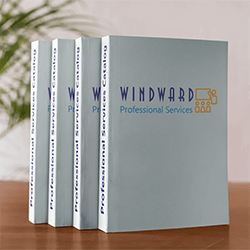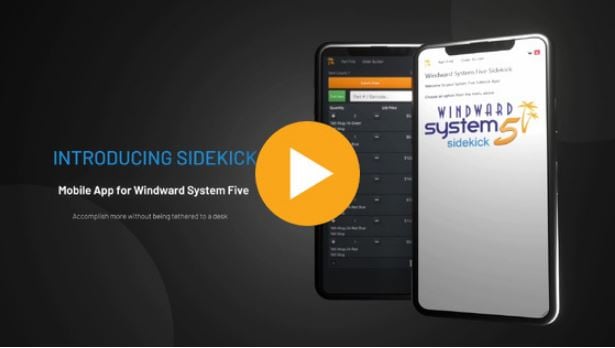A properly configured network will allow Windward Software products to function correctly and free from network errors. Using high-quality network infrastructure components for switches, patch cables, etc will ensure the success of the network.
Who should read this
Your technical IT person will be configuring or maintaining your network. This may be the company that you are purchasing your hardware from or the person that is going to get your workstations talking to each other and to a server if required.
Product Overview
- Windward Software products use the Pervasive.SQL database engine.
- Pervasive has a 64-bit engine for 64-bit Operating Systems. Windward Software does support the 64-bit engine on the file server and workstation.
- Pervasive.SQL will need to communicate over the network by the server's name. DNS should resolve properly on the internal network.
- A mapped drive letter is required to run Windward applications. UNC (Universal Naming Convention) communication to the server is not supported. (ie: NET USE W: \\server\share)
Networking principles
- A 100 MB network infrastructure is recommended, as a minimum, using category 5e cabling. (If building a 1000MB network you will require category 6 cables.) For more information on this see: https://www.tomsguide.com/reference/ethernet-cables-explained
- A 100 MB switch or better is recommended. The use of network hubs (old technology) are not recommended or supported.
- A DNS-driven network using the TCP/IP protocol.
- Wireless networking is NOT supported unless it is used for Remote Desktop connectivity. There are NO other exceptions
Review this Microsoft 5-Minute Security Advisor - Basic Physical Security
Workstation principles
- A mapped drive letter to the server will need to be in place. We recommend drive W: mapped to a share on the server, generally named “WINDWARD” with full Read and Write permissions. Read and write permissions will need to be configured for all users and administrators on each workstation computer that will be accessing the “WINDWARD” share. Please consult with your computer tech for making these permissions changes if you need assistance.
Printing principles
- There are known issues with printing through terminal services. Printers that serve multiple purposes will sometimes have printer drivers that are not supported.
- The Easy Print printer driver, can cause issues with slip printers and label printers. The use of a third party printing solution such as http://thinprint.com or http://www.terminalworks.com/ can address these issues.
- A Microsoft maximum of 20 printers can be provisioned in a remote desktop session.
Peer to Peer configurations
- A standard TCP/IP based network infrastructure is required.
Terminal Services configurations
Client/Server configurations
- A standard TCP/IP based network infrastructure is required with a suporserver installed with a Microsoft Windows Server Family operating system. See the Recommended System Requirements
- Microsoft Active Directory (AD) is not required but is recommended.
Server principles
- Ensure your network share to be used is set to both R/W (read and write) access.
- Ensure a static IP address is set on the server to avoid the server changing its IP address during operation.
- DNS should resolve properly
- Keep server name simple, i.e. “server” or “server2K22”
- If using a workgroup, user accounts used to sign into the workstation should also exist on the server.
- If using a domain, ensure it is configured correctly, with correct user permissions. (A Windows Domain is not required but is a good tool for network administration)




